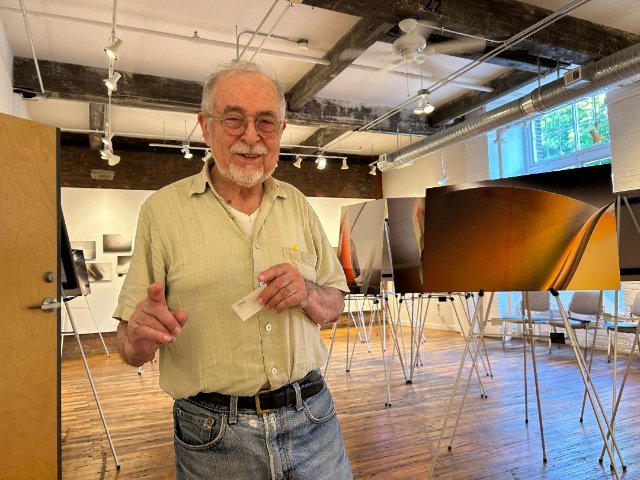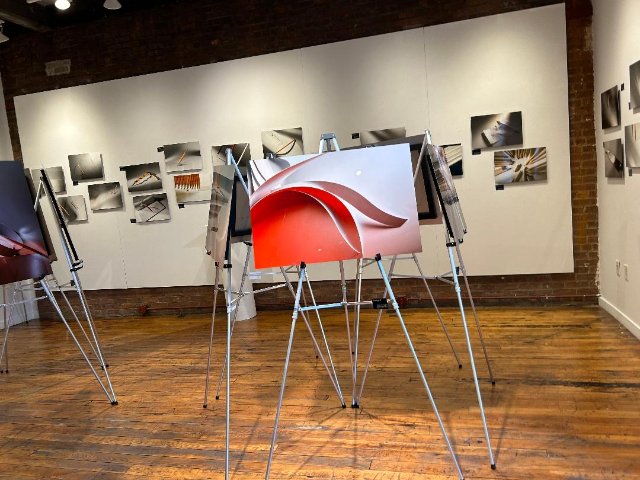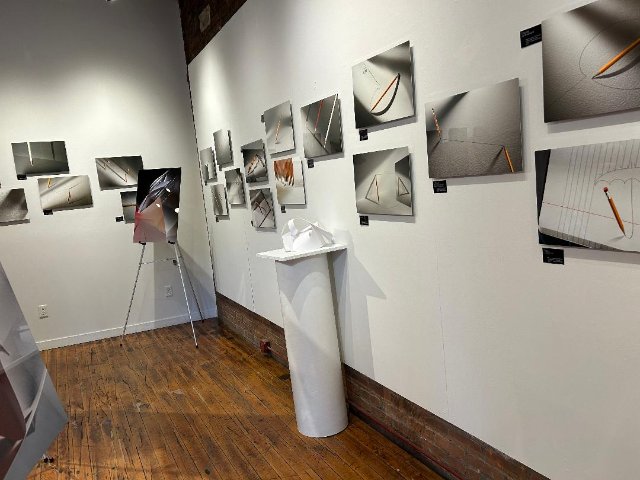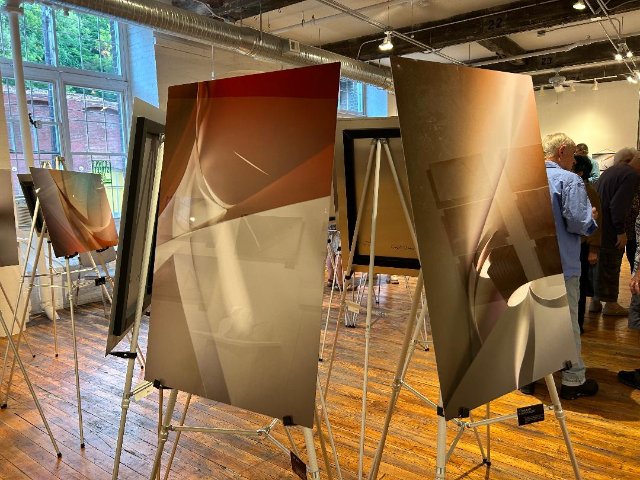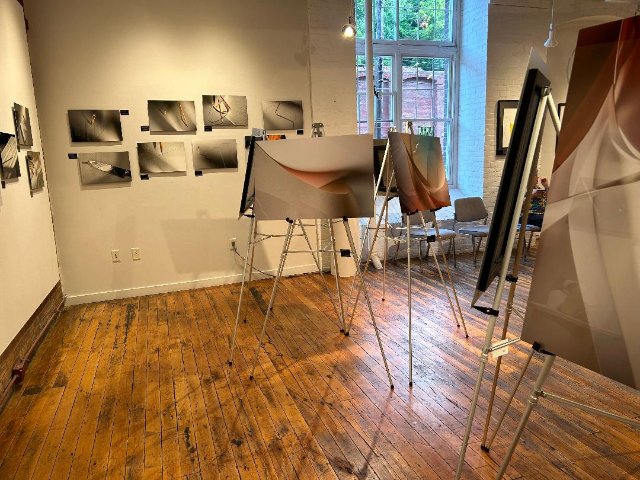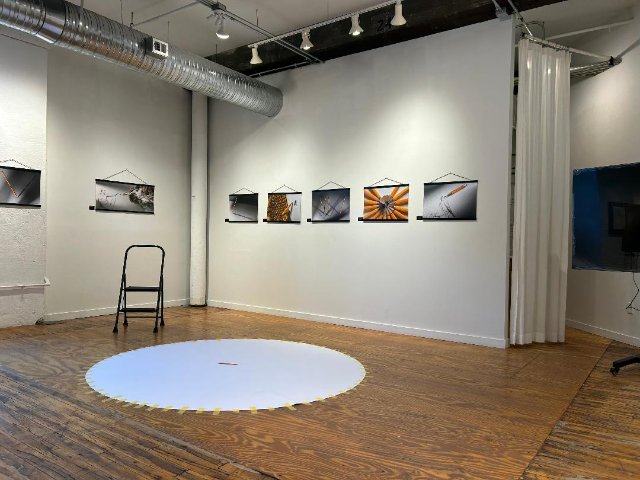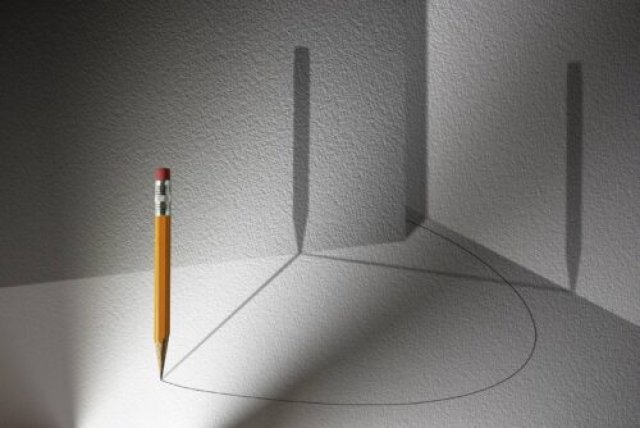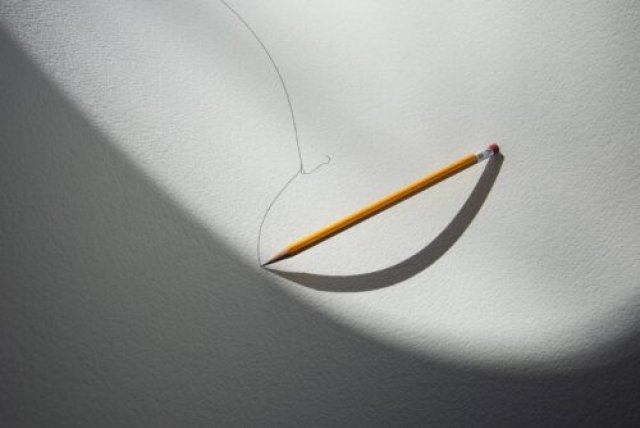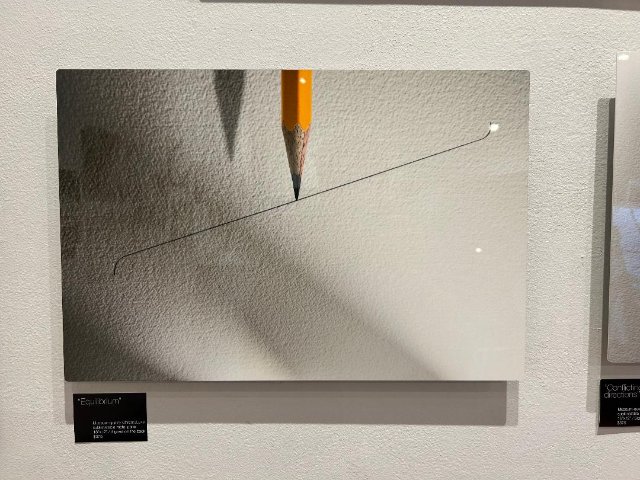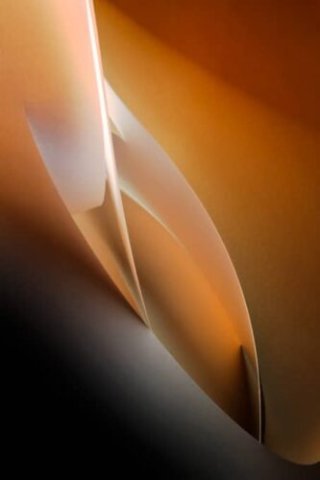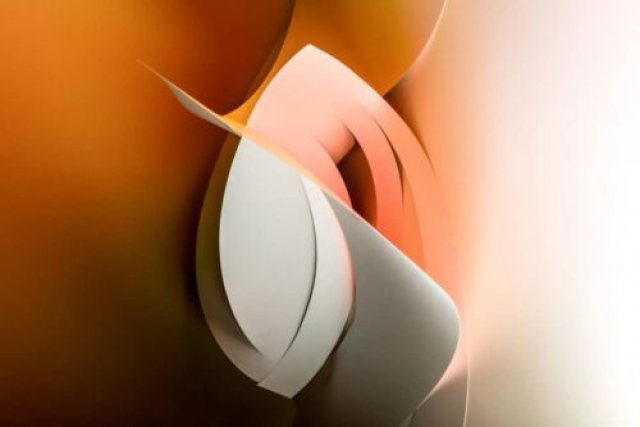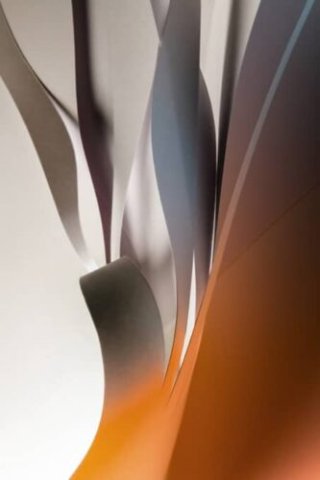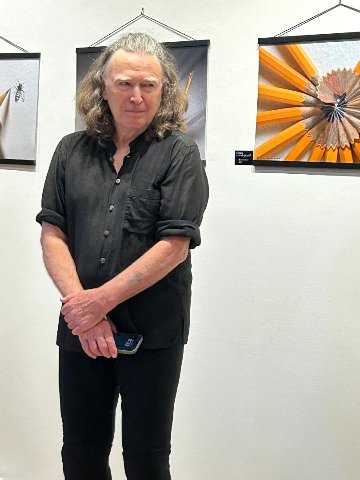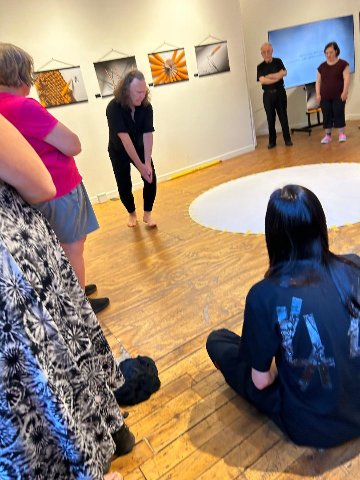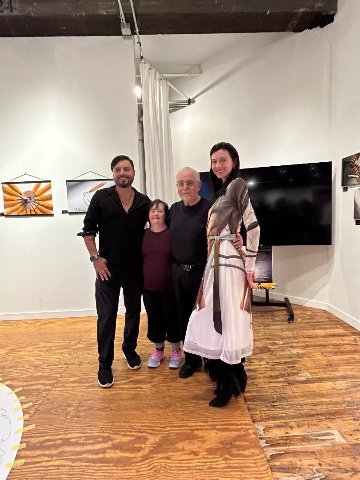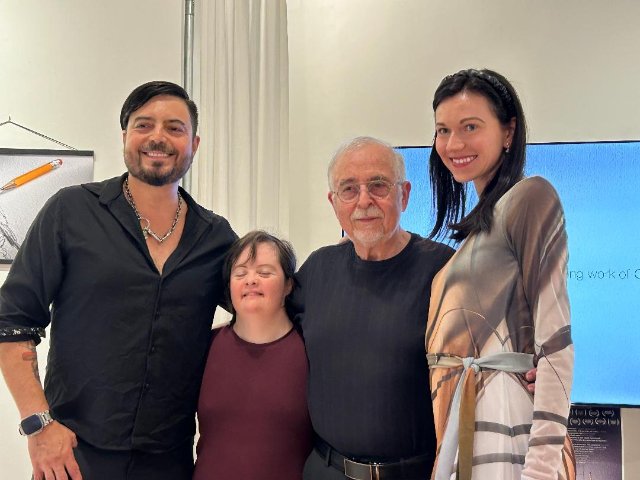Carlos Caicedo at Eclipse Gallery in North Adams
Pencils Make a Point
By: Charles Giuliano - Sep 07, 2024
Colombian born, Carlos Caicedo, is an award winning graphic designer, artist/ photographer, and fashion creator. His remarkable range of skills is on vivid display in a dense installation at the Eclipse Gallery in North Adams.
For many years the simple yellow pencil has been a theme through inventive and often humorous graphic images. There is another body of work that entails lighting and photographing paper constructions. They result in multi colored, vectored abstractions.
There is a separation in how this dichotomy of imagery is presented. The pencil themed works are hung in rows and clusters. The non objective color photographs have been mounted and set on a maze of easels. The visitor must work through the installation finding clear paths and vantage points to view the works. It’s dense and a bit overwhelming. That entails a full immersion into the creative invention of this truly unique and remarkable artist.
This full on approach, which uses every inch of walls and interior space, sets a new bar for exhibits in the Eclipse Gallery.
Finally breaking free of the labyrinth, at the far end of the gallery, there is an animated video, Doodle, to view. The short work, which has garnered festival kudos, was created by his son Mo following the concepts of his father.
He states that “There are objects we take for granted because they've been part of our daily lives since we can remember. They're so well designed, modern technology hasn't been able to improve them. The humble pencil is one of them. The pencil is an extension of our brain.
“The film ‘Doodle’ explores that very personal connection. The pencil comes alive and replaces the invisible individual that controls it. It follows its own line, discovering itself in the process, and others as it draws its own future. Simple lines become complicated thoughts. One pencil becomes many. It's the ultimate team work.
”This special film is based on the lifelong work of my father, Carlos Caicedo. He's well known in the photography industry for his work with pencils and paper, it was an honor to work with him to bring his work to life. Here's a link to his work online: https://500px.com/carloscaicedo1/galleries/pencils “
The yellow pencil is one of the first tools that we have all encountered as children. It’s what we used to learn our ABCs, write our name, and do simple math. The ubiquitous, humble pencil could not be more generic.
With endless variation over many years Caicedo has coaxed out of it an alleged subconscious of hopes and dreams. In the animated film the movement and subsequent line is truly balletic.
It is little wonder that it has inspired an inventive dance by an Eclipse neighbor and yet another remarkable artist, Wendell Beavers. A six foot circle of paper was fixed to the floor. In a brief sequence he circumnavigated it seemingly finding a place to enter. Once within the magical circle he sprawled and turned, twisting and tumbling with remarkable agility. All the while he made marks on the paper in seemingly random patterns.
There was a second performance an hour later with an enormous pencil and another series of marks. After a discussion between artist and dancer it was decided to leave the circle as a part of the exhibition. With the further notion that visitors are invited to add their own marks and comments. There are lots of available pencils. I nicked a couple which, no doubt, will be put to good use.
I much enjoyed engaging with the secret life of pencils. They are witty and readily accessible. The “abstracted” images are less so and take a different level of visual engagement and critical analysis. That puts us in the throes of modernism and its daunting chamber of mirrors.
In general, viewers struggle to comprehend abstract art. That was the case when Picasso and Braque developed Cubism after 1907. Picasso’s Blue and Rose periods were acquired by French collectors. They balked at the new avant-garde work which was embraced by German dealers and collectors. The French audience is never as adventurous as its artists.
That changed in 1917 with the ballet “Parade.” It entailed music of Eric Satie, choreography by Leonide Massine, a libretto by Jean Cocteau, while sets and costumes were designed by Picasso. He brought cubism to the stage and for the first time the audience had a clue to what it was about.
Similarly, Caicedo has printed his abstract designs, as well as those of his daughter Sandra, onto fabric. From this material he has created women’s fashions. During the opening one of his dresses was worn by the tall and stunning Khrystsina Garay. She is the fiancé of his son Maurice (Mo).
As it was for Picasso, demanding abstraction is more readily comprehended when draped over the form of a stunning woman.
Using his yellow pencils, with this astonishing exhibition, Caicedo has checked all the right boxes.

